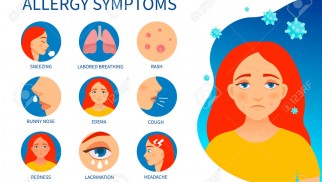Understanding-Allergies: Causes, Symptoms, and Solutions


What Are Allergies and Why Do They Happen?
Have you ever wondered why your body reacts negatively to harmless substances like pollen, dust, or certain foods?Allergies occur when the immune system mistakenly identifies a non-harmful substance as a threat and overreacts to it.
- The immune system produces antibodies called Immunoglobulin E (IgE) that trigger an allergic reaction.
- Common allergens include pollen, pet dander, mold, dust mites, and specific foods like nuts or dairy.
- The reaction can range from mild discomfort to severe, life-threatening conditions like anaphylaxis.
Common Allergy Symptoms
Allergic reactions can manifest in various ways, affecting different parts of the body. Recognizing these symptoms is essential for timely management.
- Respiratory symptoms: Sneezing, coughing, nasal congestion, and shortness of breath.
- Skin reactions: Itching, hives, eczema, and swelling.
- Digestive issues: Nausea, vomiting, diarrhea, and stomach cramps (common with food allergies).
- Severe reactions: Anaphylaxis, which can cause difficulty breathing, swelling of the throat, and a drop in blood pressure.
Types of Allergies
There are various types of allergies, each triggered by different allergens. Identifying the specific type can help in managing symptoms effectively.
- Seasonal allergies (hay fever): Triggered by pollen and occur during certain times of the year.
- Food allergies: Caused by specific foods like peanuts, shellfish, or dairy.
- Drug allergies: Reactions to certain medications such as penicillin or aspirin.
- Skin allergies: Caused by contact with irritants like latex, fragrances, or chemicals.
- Insect sting allergies: Triggered by bee or wasp stings, sometimes leading to severe reactions.
Allergy Triggers and Prevention
Avoiding allergens is the best way to prevent allergic reactions. Here are some common triggers and how to minimize exposure:
- Pollen: Stay indoors during high pollen seasons and use air purifiers.
- Dust mites: Wash bedding regularly and use dust-proof covers.
- Pet dander: Keep pets out of bedrooms and groom them frequently.
- Mold: Use dehumidifiers and clean damp areas often.
- Food allergens: Read ingredient labels and be cautious when eating out.
Treatment Options for Allergies
While avoiding allergens is ideal, it is not always possible. Fortunately, several treatment options are available to manage allergy symptoms.
- Antihistamines: Reduce sneezing, itching, and runny nose.
- Decongestants: Help relieve nasal congestion.
- Corticosteroids: Reduce inflammation and control symptoms.
- Immunotherapy: Allergy shots or tablets that help build immunity over time.
- Epinephrine (EpiPen): A life-saving treatment for severe allergic reactions.
A Solution: Azelastine (Astelin)
One of the most effective treatments for allergies is Azelastine (Astelin), a nasal spray that helps relieve symptoms of allergic rhinitis.
- Fast-acting: Provides quick relief from nasal congestion, sneezing, and itching.
- Long-lasting: Offers prolonged relief without causing drowsiness.
- Non-steroidal: Works without the side effects of corticosteroids.
- Easy to use: A simple nasal spray application makes it convenient for daily use.
Allergies can significantly impact daily life, but with proper management and treatment, symptoms can be controlled effectively. Understanding triggers, avoiding allergens, and using medications like Azelastine (Astelin) can provide relief and improve quality of life. If allergies are persistent or severe, consulting a healthcare professional for personalized treatment is always recommended.
Article Post: Editorial Team of RxShop.md
(Updated at Mar 1 / 2025)

